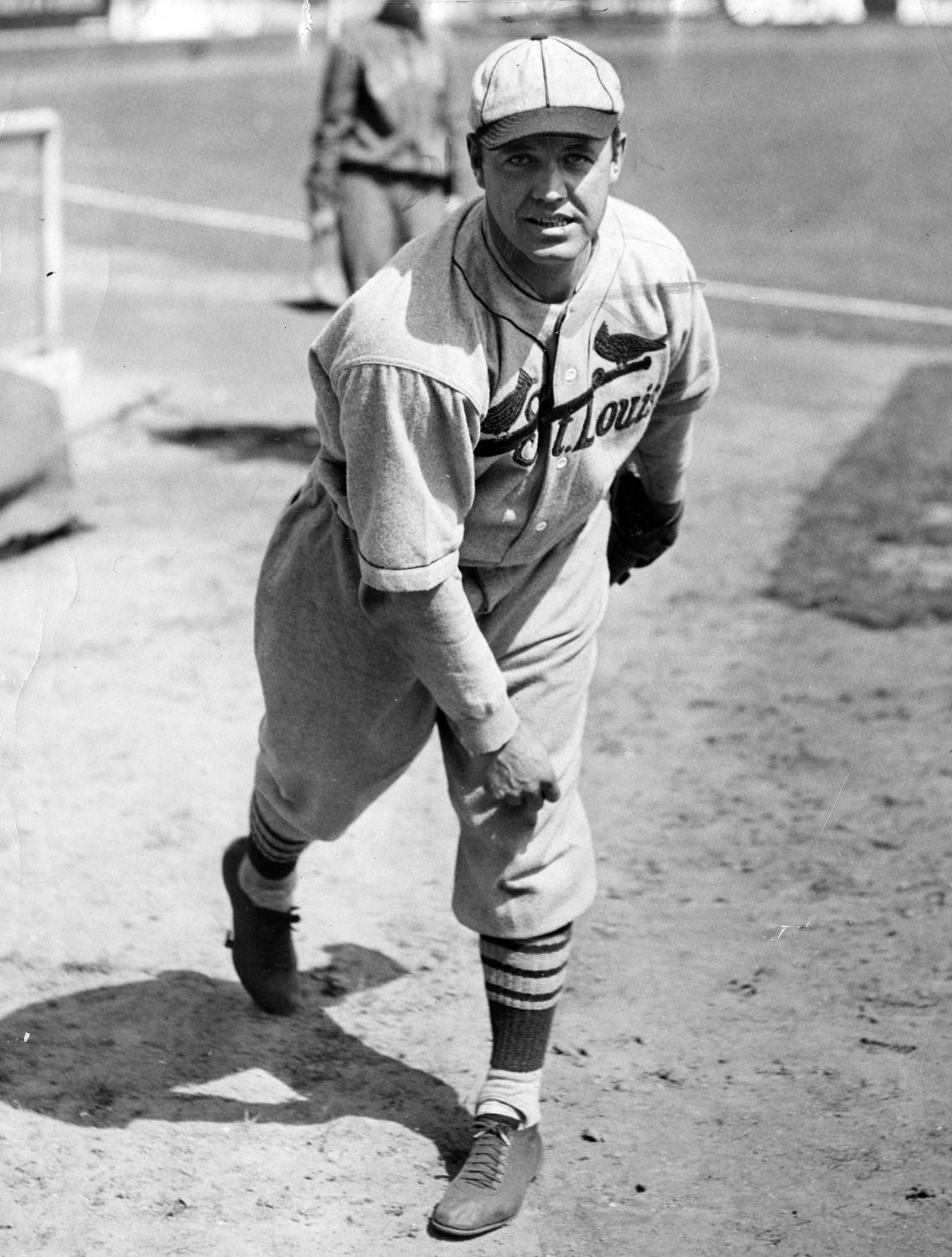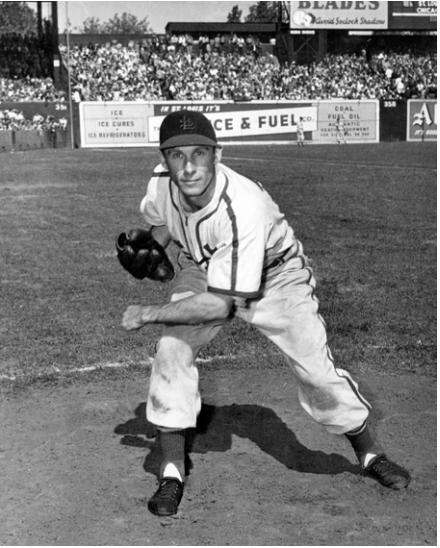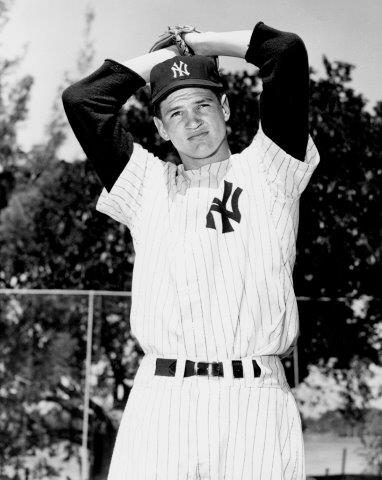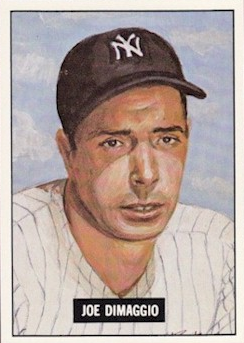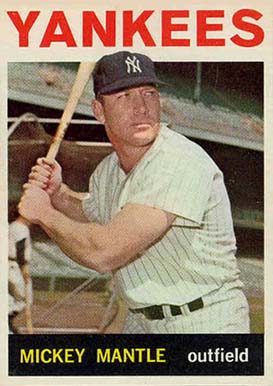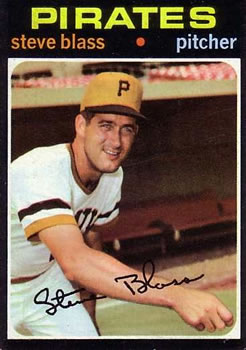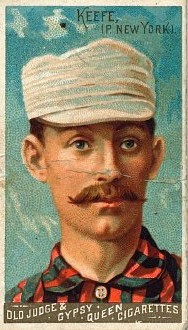October 27, 1991: Jack Morris goes the distance
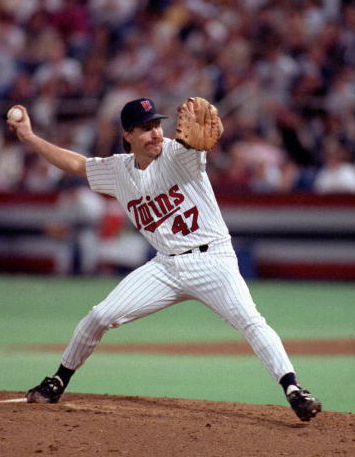 After the 1987 World Series, it was another four years before the series went the distance again. Like 1987, the Minnesota Twins represented the American League. It’s not that the Twins had stayed near the top during that period. Although they actually improved their regular-season record in 1988, while finishing in second place, the team dropped over the next two seasons, all the way to the cellar in the American League West Division in 1990.
After the 1987 World Series, it was another four years before the series went the distance again. Like 1987, the Minnesota Twins represented the American League. It’s not that the Twins had stayed near the top during that period. Although they actually improved their regular-season record in 1988, while finishing in second place, the team dropped over the next two seasons, all the way to the cellar in the American League West Division in 1990.
The National League representative, the Atlanta Braves, also finished last in 1990. However, Atlanta’s position at or near the bottom of the standings had been a way of life for the Braves over the previous six seasons.
The jump that both teams made, from last to first, in 1991 wasn’t apparent in the early part of the season. Minnesota dropped to a record of 20 wins and 24 losses on May 27, 7½ games out of first place. The Twins won their next three games before losing to Kansas City on May 31. However, they started June with a win and then added another 14, setting a team record with a 15-game winning streak, launching them into first place.
The rise of the Braves took longer. Atlanta was 9½ games behind first-place Los Angeles in the National League West at the All-Star break. Leading the Braves’ second-half surge was right-hander John Smoltz, who was 2-11 prior to the All-Star Game. Smoltz finished the regular season by winning his final six decisions for a 14-13 record. Atlanta also had the league’s Cy Young Award winner, Tom Glavine, who was 20-11, and Steve Avery, a southpaw who produced an 18-8 record in his second year in the majors.
The Twins had a number of core players from their 1987 team with a number of players acquired in the interim playing key roles. A 1989 trade of Frank Viola to the New York Mets produced Kevin Tapani, who won 16 games, and Rick Aguilera, who had 42 saves. Another right-hander, Scott Erickson, won 20 games in his first full season in the majors. A pair of free-agent acquisitions filled out the team. One was designated hitter Chili Davis, who led the team in home runs and runs batted in. The other was Jack Morris, a Minnesota native who had won nearly 200 games in 14 seasons with the Detroit Tigers. With Minnesota in 1991, Morris had an 18-12 record and led the Twins in innings pitched.
The team’s workhorse, Morris was called upon to start three games in the World Series and was on the mound for Game Seven, facing Smoltz, who received a no decision in the Braves’ win in the third game.
The series to this point had been a great one. Four of the six games had been won in a team’s final at-bat, with two going extra innings, serving as a prelude to a classic seventh game battle inside the Hubert H. Humphrey Metrodome.
Neither the Braves nor the Twins mounted a strong threat in the early part of the game. Both went down in order in the first. Smoltz gave up a pair of two-out singles in the second and a one-out double in the third. He also hit Kent Hrbek with a pitch to open the fourth. Meanwhile, Morris gave up hits in the second, third, and fourth innings.
Morris faced a bigger problem in the fifth when Mark Lemke led off with a single and was sacrificed to second by Rafael Belliard. Lonnie Smith also bunted, with the intention of beating it out. Smith didn’t beat the throw to first—in fact, he actually slowed himself down with an ill-advised feet-first slide into the bag—but he was safe when third-baseman Mike Pagliarulo’s hurried throw pulled Hrbek off the base. Lemke advanced, and Atlanta had a runner at third with only one out. Terry Pendleton popped a split-fingered fastball to short left, far too shallow to bring home Lemke, and shortstop Greg Gagne waved off left-fielder Dan Gladden to catch it for the second out.
It was left to Ron Gant to bring in the run. Gant took a called strike, then looked at a couple of splitters in the dirt. The second one bounced off catcher Brian Harper and back toward the mound. Morris rushed in, scooped up the ball, wheeled, and fired to third. Lemke, who had started to break to the plate, barely got back to third under Pagliarulo’s tag. Before the next pitch, Morris tried to nail Smith, narrowly missing with a pickoff attempt to first. Having come close, but not getting either of the runners, Morris turned his attention back to Gant, who worked the count full. Morris then placed a fastball right where he wanted it, on the low-outside corner, freezing Gant with a called third strike to end the inning.
The tension mounted as the game stayed scoreless through seven. What came next was one of the most suspenseful innings in the history of the World Series.
Lonnie Smith led off the eighth for Atlanta with a broken-bat single, bringing up Pendleton.
Morris got ahead in the count, 1-and-2, then delivered a wicked splitter that Pendleton chased as it broke below his knees. Plate umpire Don Denkinger indicated that Pendleton had gotten a piece of the ball and then checked with third-base umpire Terry Tata to see if catcher Harper caught the ball before it hit the ground. Tata ruled the foul ball had hit the dirt before Harper grabbed it. Pendleton’s life at the plate was extended, and he made the most of the opportunity on the next pitch, Morris’s 100th of the game.
As Morris started his delivery, Smith danced off first, then broke for second when Morris released the pitch, which came in over the lower portion of the strike zone, toward the outside corner of the plate. Pendleton reached and drilled the pitch toward the gap in left-center field.
The drive was clearly going to be good for extra bases with the only question being as to whether it would stay in play. If the ball hopped the fence for a ground-rule double, Smith would have to stop at third. Otherwise, it appeared he would be able to score easily and give Atlanta the lead.
In the outfield, the ball bounded in the area where the top of the permanent fence was extended with a Plexiglas barrier. The ball hit the Plexiglas and stayed in the field.
Back in the infield, Smith was having trouble. After taking off with his delayed steal, he did not pick up the direction of the ball as it left Pendleton’s bat. The Twins middle infielders weren’t about to help him. Chuck Knoblauch dropped to a knee, twisted toward second, and faked a throw. Gagne went along with the ruse by taking a few steps toward the base before heading toward the outfield to take the throw.
Smith rounded second and, still unsure of the location of the ball, held up. He didn’t get any assistance from Jimy Williams, who stood transfixed in the third-base coaching box. However, Smith’s wasn’t looking in that direction anyway. His attention was focused toward the outfield, and he resumed running only after seeing Gladden play the carom off the Plexiglas.
By this time, Smith’s chance of getting all the way home was gone, and he had to stop at third as Pendleton pulled into second. Despite not scoring, Atlanta still had a serious threat going, particularly with the heart of its order coming up.
While Twins fans were sweating, Morris later said he was still calm. “I never had a negative thought,” he maintained. “I’m such a positive thinker, I never really felt like I was in trouble. It was my will that carried me through the game.”[fn]Interview with Jack Morris, July 11, 2002, in Milwaukee following major league baseball’s press conference to name the most memorable moments in history of the game.[/fn]
Morris needed every bit of his will, as well as his nasty splitter, as Gant stepped to the plate. Gant had stranded a pair of runners in each of his previous two at-bats, although this time, with no one out, even an out could bring in a run. Minnesota responded by pulling in its infield.
Gant popped the first pitch foul, then went after a splitter on the outside part of the plate, resulting in a feeble grounder down the first-base line. Hrbek fielded it and kept his eyes on Smith, making sure he held at third, as he tagged Gant for the first out.
Getting Gant was the key to the inning as it allowed the Twins to walk the dangerous David Justice to set up a double-play possibility and bring Sid Bream to the plate. Bream pulled a 1-and-2 pitch down to Hrbek, who fired home to force Smith. Harper’s return throw to Hrbek was in time to get Bream for an inning-ending double play.
The drama continued in the bottom of the inning. Randy Bush hit for Gagne and grounded a single up the middle. One out later, Knoblauch went to right with a base hit, sending pinch-runner Al Newman to third. Atlanta manager Bobby Cox went to his bullpen, calling for left-hander Mike Stanton to relieve Smoltz, who received a nice ovation from the Braves’ contingent—which included team owner Ted Turner and his fiancé, Jane Fonda—as he left the field.
Stanton intentionally walked Kirby Puckett to bring up the left-handing hitting Hrbek, who was hitless in his previous 15 at-bats. However, as was the case with Gant and Bream in the top of the eighth, Hrbek didn’t necessarily need a hit to drive in a run. Stanton jammed Hrbek with a 2-1 pitch on the inside corner, and Hrbek hit a soft liner toward second. Lemke moved to his right, snaring the ball at knee level with a backhanded grab, and let his momentum carry him toward second, where he stepped on the base to double off Knoblauch.
The eighth was an amazing inning, and the game was still scoreless. Morris was efficient in the top of the ninth, needing only eight pitches to retire the Braves in order. Stanton wasn’t as fortunate as he delivered the same number of pitches to Davis, the first batter in the last of the ninth, before giving up a single to the Twins’ designated hitter on the next pitch. Harper then bunted for the purpose of a sacrifice and got an added bonus when the ball rolled between Stanton and first-baseman Bream for a base hit, putting runners at first and second with no out. Once again, Cox went to the bullpen. Alejandro Pena, a hard-throwing right-hander came in to face Shane Mack.
After a strike, Mack hit a hard grounder to Lemke, who threw to shortstop Belliard to start a double play as pinch-runner Jarvis Brown went to third. Cox had Pena intentionally walk Pagliarulo, and Twins manager Tom Kelly countered by sending Paul Sorrento up to hit for Newman. Sorrento fell behind, no balls and two strikes, fouled off a couple of pitches, and finally fanned on a fastball to end the inning.
As the managers made moves on the field, Kelly also decided that Morris, with 118 pitches through nine innings, had seen enough action. Morris, however, let his manager know he still felt strong, causing Kelly to rescind his decision. As a result, after the Twins failed to score in the last of the ninth, it was Morris, not Aguilera, who was on the mound in the top of the tenth. For the second inning in a row, Morris put the Braves down on only eight pitches. The last batter to reach base off Morris, other than Justice on the intentional walk, was Pendleton with the eighth-inning double. Yet, even if Morris could continue keeping the Braves off the scoreboard, he couldn’t win the game unless his mates could find a way to score.
Dan Gladden broke his bat on the first pitch of the last of the tenth, but it produced a fly ball that dropped in left. Running hard the entire way, Gladden hustled to second with a double. Knoblauch moved him to third with a sacrifice. Puckett and Hrbek—the next two batters—were walked intentionally to load the bases. Atlanta pulled in its infield and outfield as Gene Larkin came out of the Twins dugout to hit for Brown.
Larkin had played little in the post-season, but he had been observant during Pena’s previous appearances in the series. “When he came in, his first pitch was usually a fast ball,” Larkin recalled. On Pena’s first delivery, Larkin got the pitch he expected and the location he wanted. “He threw a pitch away and up, so I just had to make pretty good contact.”[fn]Interview with Gene Larkin, September 17, 2002.[/fn] Larkin connected, sending a high fly to left. He immediately flung out his arm in celebration, certain that he had hit the ball far enough. Left-fielder Brian Hunter turned and chased the fly, knowing the result would be futile whether he caught it or not.
The ball dropped beyond Hunter, and Gladden, who was tagging at third in case the ball was caught, took off for a triumphant jog home where his teammates awaited him. Gladden stepped on the plate to finally bring the game to a close.
A tight series had been climaxed by a fantastic game, prompting Commissioner Fay Vincent, in presenting the championship trophy to the Twins, to proclaim that this had been “probably the greatest World Series ever.”[fn]Murray Chass, “A Title in the 10th: Twins Are Sitting on Top of the Dome,” New York Times, October 28, 1991, p. C1[/fn]
Additional Stats
Minnesota Twins 1
Atlanta Braves 0
10 innings
Game 7, WS
H.H.H. Metrodome
Minneapolis, MN
Box Score + PBP:
Corrections? Additions?
If you can help us improve this game story, contact us.


